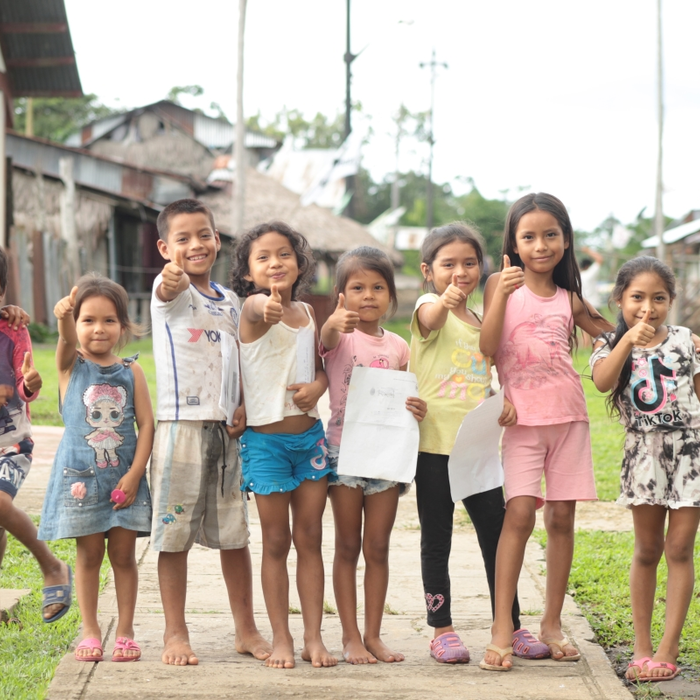Still Learning for Peace
Insecurity presents a significant development challenge in the 21st Century. According to OECD, more than half of the world’s poor will be living in countries affected by high levels of violence by 2030. At the UN, no less than three Peace and Security reviews have called for all agencies to contribute to sustaining peace and leveraging social services for peacebuilding. The 2030 Agenda for Sustainable Development pledges to reduce inequalities and promote peaceful, just, and inclusive societies because “there can be no sustainable development without peace, and no peace without sustainable development.”
In July 2019, the United Nations High-Level Political Forum will receive for the first time reports from 51 countries on national achievements on both Standard Developmen Goal #4 (Education) and #16 (Peace, Justice and Strong Institutions). The forum will serve as an indicator to what extent national governments seize opportunities to leverage education services not only for quality learning, but also for the transformation of social relationships. How can education services be leveraged to contribute to the mitigation of conflict factors in fragile and post-conflict settings?
From 2012 to 2016, UNICEF was asked to show forward ways for addressing the problems of insecurity and inequality through various education programs and, specifically, its “Learning for Peace Program.” “Learning for Peace” was funded by the Government of the Netherlands and implemented in partnership with the national governments of 14 countries—Burundi, Chad, Côte d’Ivoire, Democratic Republic of the Congo, Ethiopia, Liberia, Myanmar, Pakistan, Sierra Leone, Somalia, South Sudan, State of Palestine, Uganda, and Yemen. The program was tasked to propose workplans that strengthened resilience, social cohesion, and human security in conflict-affected contexts, focusing on education, early childhood development, and child protection workplans. Learning for Peace strived to be conflict-sensitive (do-no-harm) while also addressing identified conflict factors (do-more-good). An independent program evaluation concluded that Learning for Peace’s “emphasis on conflict analysis-based programming… led to responsive context-specific programs that can contribute to peacebuilding.”
While Learning for Peace has ended, the evidence and findings collected on its webpage remain a relevant resource for governments and agencies aiming to deliver on the SDG commitment for sustainable peace and development. In all, Learning for Peace produced or stimulated more than 70 research products, conflict analyses, manuals and guidance notes, case studies, and more, all illustrating the vital links between education, social cohesion, and peacebuilding. The website, which continues to be updated as new material becomes available, provides readers with a knowledge platform organized around the following topics:
- Adolescent and young people, and peacebuilding
- Conflict analysis
- Early childhood development and peacebuilding
- Education governance and peacebuilding
- Education under attack
- Education inequality and peacebuilding
- Gender and peacebuilding
- Measuring social cohesion
- Resilience, language, and social cohesion
- Risk-informed Programming
- Transitional justice
- Program-wide results
Each page provides links to written materials as well as helpful videos and other media. While it is impossible to summarize the depth of knowledge gained through Learning for Peace, the materials provide ample quantitative evidence that, according to one 2015 study, education inequality doubles the likelihood of violent conflict, whereas greater education equality between males and females reduces the likelihood of violent conflict by 37%. Other materials introduce theories of change on how investments in youth agency or early childhood development can build citizenship capacities in youth or caregivers, and how gender-sensitive programming reduces violence in post-conflict contexts. Learning for Peace also provides case studies in how governments and education practitioners can foster peace not only through physical reconstruction of schools, but also by responding to the context-specific education of young people, teacher training, through school curricula that promote universal values of tolerance and social cohesion, and through conflict-sensitive reforms that address the legacies of past injustices in the education sector itself and the public culture. Many Learning for Peace publications illustrate this central idea, no less true today, that conflict analysis must facilitate conflict-sensitive education programming.
For more information, please contact faffolter@unicef.org or aazaryeva@unicef.org.
Learn More:
Related Blog Posts

Unlocking a World of Learning

Exploring Three Resources in the PSS-SEL Toolbox
